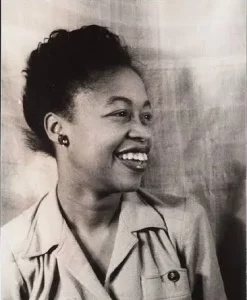Writing for Young Adults: Seeing YA as a Lens
4 min read
Young Adult fiction is one of the most transformative spaces in literature, not because of genre or trend, but because of perspective. At its core, YA is a lens. It is a way of seeing and interpreting the world that is grounded in discovery, intensity, and emotional honesty. When writers understand this lens, they gain access to a storytelling space filled with possibility, resonance, and deep connection.
YA is not simply fiction written for teens. It is a narrative point of view shaped by characters who are stepping into their power, questioning the world around them, and learning how to trust themselves. The YA lens allows readers to experience life in motion, not from a distance but from right up close. That is where its magic lives.
In this article, we explore how the YA lens works, and how writers can use it to craft stories that feel both grounded and vibrant.
The YA Lens Begins at the Threshold of Becoming
Young Adult stories thrive at the moment when life begins to expand. It is the season of first steps into independence, the moment when the familiar world starts to shift and reveal deeper layers. Characters in YA are not fully formed. They are becoming. That is the heart of the lens.
Through this perspective, readers witness the protagonist standing at the crossroads of identity, responsibility, relationships, and possibility. The YA lens captures the intensity of:
- First major choices
- First real losses
- First deep friendships
- First heartbreaks
- First leadership roles
- First encounters with injustice
- First moments of claiming personal truth
These stories feel alive because the characters are encountering life as it unfolds, not through nostalgia but through immediacy.
Voice Through the YA Lens: Present, Raw, and Unfiltered
The voice of YA fiction is not defined by slang or trend. It is defined by presence. YA voice speaks with clarity and urgency. It is honest, rhythmic, and rooted in the character’s inner world.
This voice often stays close to the character’s thoughts and emotions. It captures the intensity of feeling something fully for the first time. A YA voice invites the reader into the heart of the moment.
YA voice is:
- Direct and emotionally open
- Clear without being simple
- Full of internal questions and realizations
- A blend of vulnerability and boldness
- Driven by pacing and emotional rhythm
A strong YA voice does not imitate how teens speak in real life. It reflects how they feel. That emotional resonance is what carries the story.
Stakes in YA: The Human Story Comes First
While YA can include complex plots, high fantasy worlds, or dystopian landscapes, the core stakes always begin within the character. The YA lens places meaning before spectacle. A magical battle may be exciting, but the emotional shift behind the battle is what defines the story.
This lens prioritizes:
- Belonging
- Self definition
- Trust and betrayal
- Courage and fear
- Identity
- Love and friendship
- Purpose and possibility
In YA, the external conflict and the internal conflict reflect each other. Readers are not just watching what happens. They are experiencing how it changes the character.
Growth in YA Happens in Real Time
YA characters grow with immediacy. Every decision shapes who they are becoming. The YA lens highlights the transformative nature of adolescence, not as a stereotype, but as a time of profound development.
YA fiction is a natural home for:
- Coming of age stories
- Identity exploration
- Cultural awakening
- New love stories
- Moral and social questioning
- Leadership and responsibility
- Emotional resilience
Readers watch characters learn, adapt, break, heal, and rise. These stories resonate because growth unfolds on the page without distance. The character is discovering themselves at the same moment the reader discovers them.
Hope Through the YA Lens: The Power of Possibility
Even when YA explores heavy or complex themes, it carries an undercurrent of hope. Not a guarantee of success. Not a promise of perfection. Hope in YA is the belief that change is possible. It is the quiet conviction that the character can become someone stronger, wiser, or more grounded by the end of the journey.
Hope in YA sounds like:
- I do not know what comes next, but I am willing to try.
- I am not who I was yesterday.
- I am learning how to trust myself.
- This hurt, but it taught me something real.
The YA lens honors the weight of the world without taking away the possibility of light.
Choosing to write through the YA lens is choosing to explore the most fluid, electric, and vulnerable stage of human growth. It invites writers to revisit the moment when every experience felt like a shift in gravity, when every connection carried significance, and when every choice held the potential to shape the future.
It is not about simplifying life for younger readers. It is about reflecting life as they live it: intense, vivid, courageous, questioning, and full of potential.
When writers honor the YA lens, they do more than tell a story. They offer a companion for the journey. They offer language for feelings readers have not yet learned how to articulate. They offer a mirror that shows possibility.
YA is not defined by age. YA is defined by the lens of becoming.








